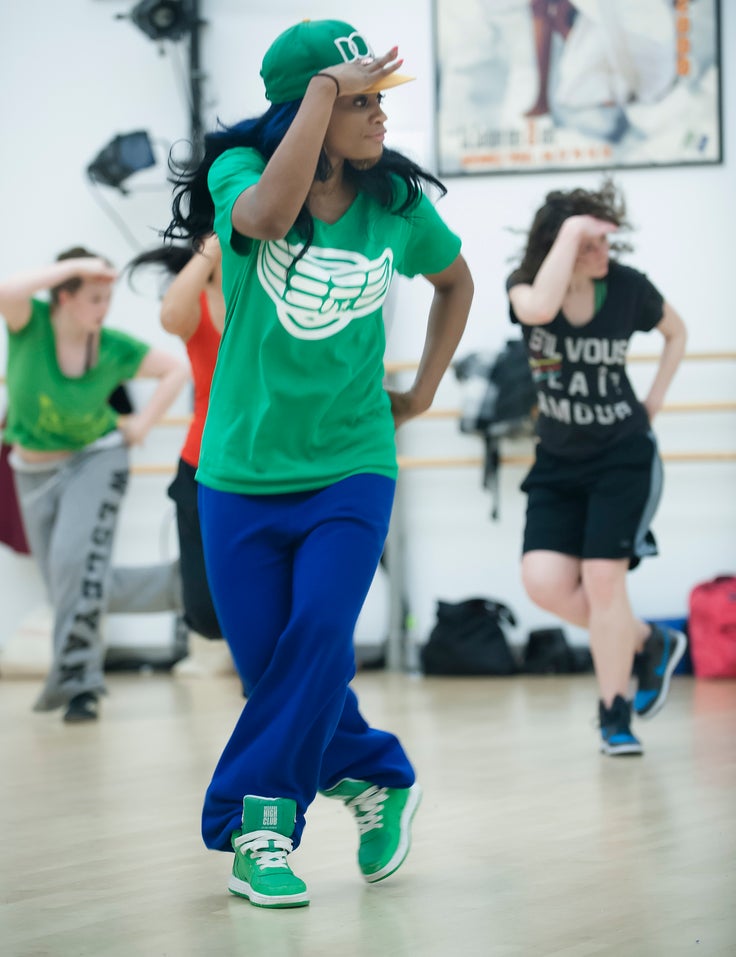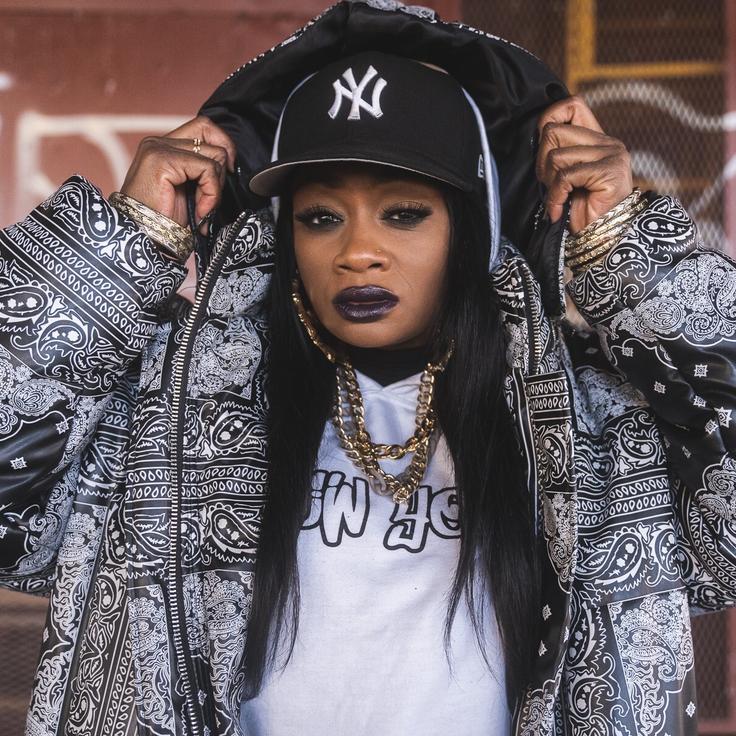As we close out the 50th anniversary of hip-hop, it’s only fitting to pay homage to not just the rappers and singers who paved the way but also the creatives who sculpted the culture on the dance floor. Dancer and choreographer Tweet Boogie, known in some circles as Tweetie, has danced with and for icons such as Jay-Z, LL Cool J, Mary J. Blige, 50 Cent, Jazmine Sullivan and Janet Jackson since she was barely out of her teens.
Now, 46, she’s taken her skills to the studio to help non-professional dancers honor their bodies and Black culture through movement at Ailey Extension, a dance studio in New York City. In each class, she pours her love, authenticity and passion for the culture into every eight-count like it’s her first time on set. In a nostalgic two-step down memory lane, the Bronx baddie herself tells us what it was like shaping the game as a woman in hip-hop.
I recently watched Netflix’s “Ladies’ First,” which highlighted the women who had important roles in growing hip-hop culture. Yet, they were often not credited for their contributions over the years. What kept you motivated in an industry that is incredibly male-centric?
Before you even step into the game, you really need to get a sense of self and define your purpose. You need to have a sense of what you bring to the table. And when you have your own table, make sure you’re careful about who sits at your table. Also, I was able to lean on other women who are confident within themselves to offer help without feeling threatened.
Tell me about your first high-profile dance job.
It was with Miss Jones. I was one of her backup dancers.
Miss Jones, as in the Hot 97 radio personality?
Yes, that was my first professional job. I did her video, “Where I Wanna Be Boy.” I did my first live performance with her, performed on television and “Soul Train.” I remember seeing Montell Jordan on the same tours. We went to L.A. for my 18th birthday. That’s where I saw Biggie Smalls. He was performing “Give Me The Loot.” That experience with her opened my eyes up to a whole new world I didn’t even know really existed or that I could be a part of.
My favorite era of hip-hop was definitely the ’90s. It was so diverse and original. It allowed me to be me ― a tomboy. Most of the ’90s I was more of a tomboy ’till hip-hop and R&B got more popular, and Bad Boy Records took over the radio.
Do you remember that defining moment when you fell in love with dancing to hip-hop?
I started dancing when I was 8 years old, at a house party. It was that Rob Base track, “It Takes Two.” I still remember that house party. It smelled super sweaty and crowded. I remember just being so scared and so shy.
Until that song came on, I danced to the whole song, and I never forgot how that made me feel. So wherever dance took me, and I felt that way, I just followed it. And once they started paying me, I thought, “I can get paid for this?” I didn’t go to college because I was on tour.
So, touring with stars was your version of college?
Absolutely.
I want to know more about your work with these fellow women titans. What do you remember about working with Mary J. Blige on her Good Morning Gorgeous Tour last year?
I’m a major Mary J. Blige fan. So for me to grow up with her music, from “What’s the 411?” to the “My Life” album throughout all of her albums to dance for her — I cried every single time. Regarding the work I did with Mary, I was also her stage body double. Working with Mary is nothing but women empowerment. I felt so inspired and motivated to be on that job.
I know you worked with 50 Cent as well — what was that like?
I always tell people I don’t work with 50 Cent; I work with Curtis Jackson. He was super respectful and appreciative of the women that were dancing on that job. Curtis Jackson takes care of his people. He’s a good listener. He pays attention. He even knew the choreography that didn’t involve him. He allowed me to grow on that job. The women there were very protected. He’s just a sweetheart.
That’s amazing to hear. The industry is so full of violent behavior toward women, so I love you can attest that 50 is a real one — and that treating women with respect is not hard.
Yeah. I felt like I really grew as a professional and was reminded who I am, what my goals are, and what my purpose was when I worked with him.

OK, back to teaching dance. When you get students struggling with the movements, how do you get them to a better place?
I tell students to just dance like we are at a party or a club. A lot of people don’t grow up with music in their household. Black and brown people learn how to dance just by listening to music. So, for the most part, they’re learning about music and dance through Black culture, and I’m bringing that into the classroom.
I try to make sure the atmosphere is not competitive because these classes at Ailey are for non-professional dancers who just want a new experience. If you trust yourself and you’re open enough to accept, “I’m not going to get it perfect, but I still try.”
“The bounce” and “a rock” are the foundation of hip-hop movement. Once they understand that, I help create the mind-body connection, which allows them to emote.
Hip-hop music and culture have gone through many phases over the past 50 years. What do you think we could use more of in music today?
Vulnerability. I think when people allow themselves to be vulnerable, they put everything into their creativity, and that’s part of the culture. The older artists put everything into their music. We don’t have enough of that. You can’t lose yourselves. That’s what builds character.
This interview has been edited for length and clarity.

